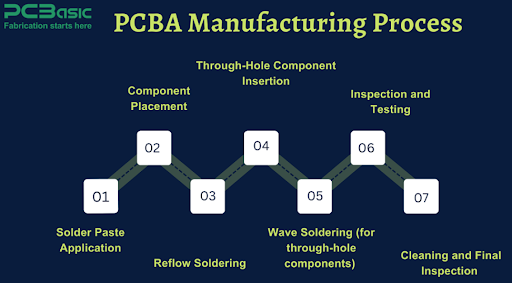Printed Circuit Board Assembly (PCBA) plays a critical role in modern electronics. Understanding PCBA meaning and its significance can help you grasp how electronic devices come together, both in terms of design and functionality. In this article, we will dive deep into what PCBA is, how it works, and why it’s essential in today’s technology-driven world.
What is PCBA?
PCBA stands for Printed Circuit Board Assembly. It is the process of attaching electronic components to a printed circuit board (PCB). A PCB provides the physical platform on which various electronic components, such as resistors, capacitors, microchips, and other elements, are mounted and connected through conductive pathways.
In simpler terms, a PCBA is a fully functional circuit board after the assembly process, whereas a PCB is just the bare board with copper traces before the components are mounted. PCBA involves several steps, including component placement, soldering, and sometimes testing to ensure everything is working correctly.
The PCBA Process
The process of creating a PCBA can be broken down into several key stages:
1. Design and Fabrication of the PCB
Before assembling a PCB, the design phase involves creating the layout of the circuit and ensuring that the traces, vias, and pads are in place to support the components. Once the design is ready, the PCB is fabricated using processes like etching, drilling, and plating to form the necessary copper pathways.
2. Component Placement
Once the PCB is fabricated, the next step is component placement. This is where the electronic components are positioned on the board according to the design. Component placement can be done manually for smaller quantities, but automated machines are often used in high-volume production.
3. Soldering
The next step is soldering, where the components are electrically and mechanically connected to the PCB using solder. Soldering can be done in several ways:
- Wave soldering: Ideal for components with through-holes.
- Surface Mount Technology (SMT): Used for mounting smaller components directly on the surface of the PCB.
4. Testing and Quality Control
After the assembly, the PCBA goes through various tests to ensure functionality. This may include visual inspection, electrical testing, and sometimes more advanced techniques such as X-ray inspection and functional testing.
Importance of PCBA in Electronics
1. Reliability and Durability
PCBA ensures the reliability and durability of electronic devices. By carefully soldering components and verifying their functionality, the assembly process helps create a robust and long-lasting product. Any errors in assembly, such as poor soldering or misplacement of components, can cause the device to fail, leading to costly repairs or replacements.
2. Efficiency in Manufacturing
The PCBA process streamlines the manufacturing of electronic devices. Once a PCB is designed and components are selected, the assembly process is highly automated in mass production, allowing for quicker turnaround times and more consistent results.
3. Miniaturization of Devices
One of the main advantages of PCBA is the ability to create smaller, more compact devices. With Surface Mount Technology (SMT), electronic components are mounted directly onto the surface of the PCB, which saves space and allows for the creation of smaller, lighter devices without compromising functionality.
4. Cost-Effective Production
PCBA helps reduce manufacturing costs. By using automated machines for component placement and soldering, manufacturers can produce large volumes of boards at lower costs compared to manual assembly. This reduction in labor and assembly time makes it economically feasible to mass-produce electronic devices.
5. Wide Application in Various Industries
PCBA is used across various industries, including:
- Consumer Electronics: Smartphones, laptops, tablets, etc.
- Automotive: Electronic systems for cars such as navigation systems, airbags, and control units.
- Medical Devices: For monitoring devices, diagnostic equipment, and more.
- Industrial Equipment: Automation and control systems.
Conclusion
Understanding PCBA meaning and its process is crucial for anyone involved in electronics manufacturing. It bridges the gap between the bare PCB and a fully functional electronic device. The PCBA process ensures reliability, efficiency, and cost-effectiveness, while enabling the creation of smaller, more powerful devices. Whether you’re developing consumer gadgets, medical devices, or industrial systems, the importance of PCBA cannot be overstated in modern electronics.
The next time you use a device, remember that its functionality and reliability depend on the quality of its PCBA.

